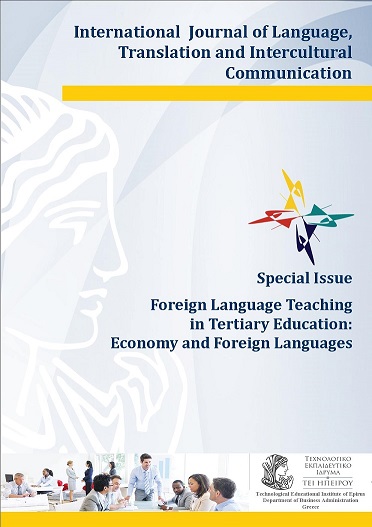Papafeio epistolary corpus as a resource in teaching LSP

Abstract
The paper is about the challenge of approaching the teaching of economic and cultural (Italian) issues through a nineteenthcentury resource. What could be a reliable material to build the intercultural bridge necessary to a translator, specialized in economics and history? Papafeio Archive and its epistolary Italian corpus can be useful under various respects. The letters are very interesting to the modern reader, since they show a cultural cross section of the nineteenth century Maltese, and generally Mediterranean, society. At first sight this conspicuous (598 letters) material could be considered obsolete, but in fact it is both productive and reliable in order to teach LSP. There are at least three main reasons for that. 1) The language itself: Italian and, more precisely, Italian language in the Mediterranean basin, that is Southern Italy and Malta, during nineteenth century. 2) Cultural models: they are stronger in epistolary corpora. 3) Specialized language: Papafis himself was a broker, and his letters often deal with business transactions in a strongly connoted cultural context. The paper shows how what we consider obsolete material can cover the cultural gap contained in an economic/historic text. Moreover it demonstrates the necessity for a deep intralinguistic intertemporal perception and knowledge of the Italian language cultural system as a primary instrument for the mediation process that a (Greek) translator should provide.
Article Details
- How to Cite
-
STORNELLI, G. (2016). Papafeio epistolary corpus as a resource in teaching LSP. International Journal of Language, Translation and Intercultural Communication, 4(1), 150–159. https://doi.org/10.12681/ijltic.10349
- Section
- Articles

This work is licensed under a Creative Commons Attribution-NonCommercial-ShareAlike 4.0 International License.
Copyright Notice
Authors who publish with this journal agree to the following terms:
- Authors retain copyright and grant the journal right of first publication with the work simultaneously licensed under a Creative Commons Attribution License that allows others to share the work with an acknowledgement of the work's authorship and initial publication in this journal.
- Authors are able to enter into separate, additional contractual arrangements for the non-exclusive distribution of the journal's published version of the work (e.g., post it to an institutional repository or publish it in a book), with an acknowledgement of its initial publication in this journal.
- Authors are permitted and encouraged to post their work online (e.g., in institutional repositories or on their website) prior to and during the submission process, as it can lead to productive exchanges, as well as earlier and greater citation of published work (See The Effect of Open Access).


